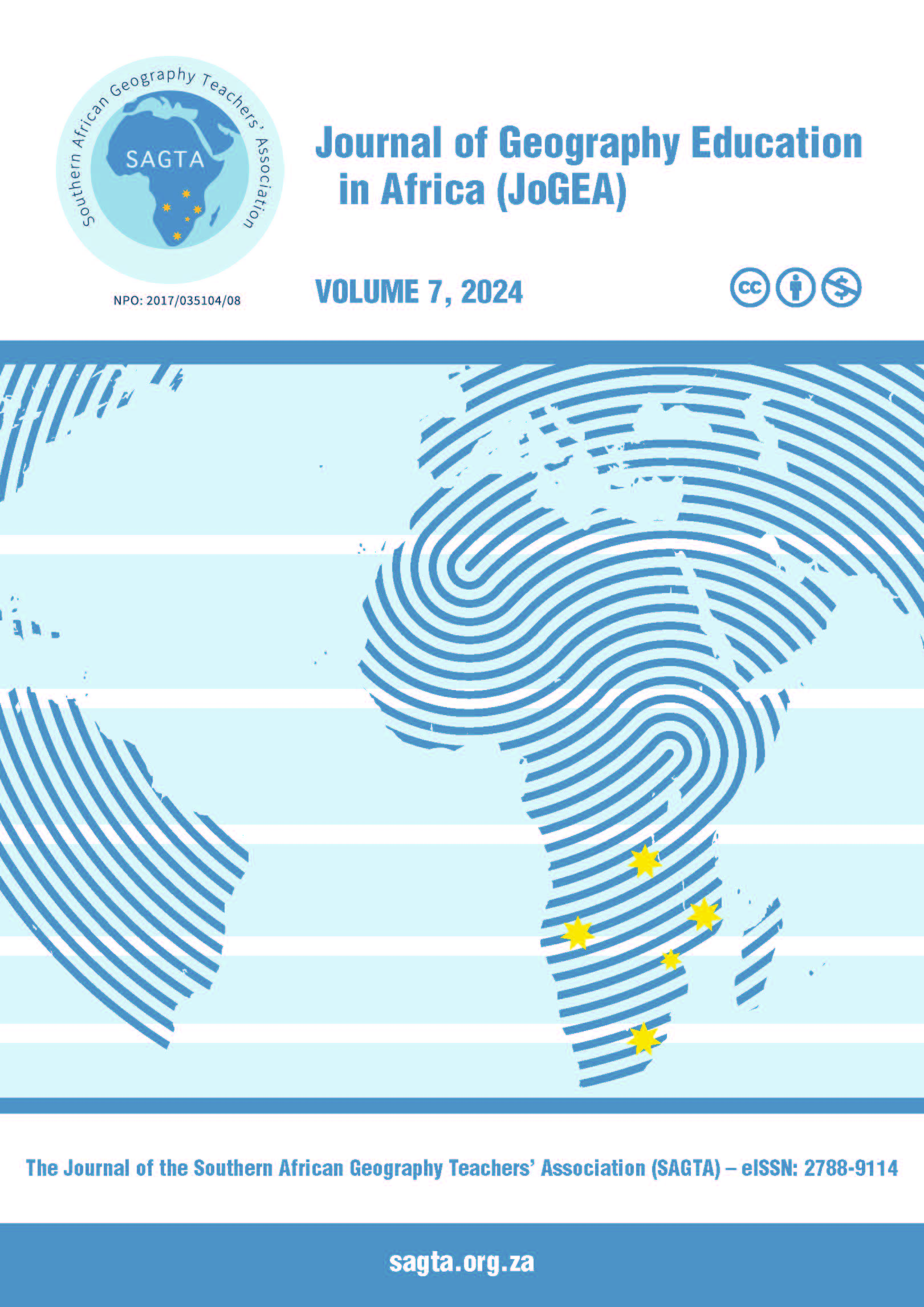Land dispossession and reform: An optic into South African Grade 12 Geography textbooks
DOI:
https://doi.org/10.46622/jogea.v7i1.5267Keywords:
Land reform, Land redistribution, Past injustice, Geography Curriculum, Geography TextbooksAbstract
Land dispossession and reform are volatile issues in contemporary South Africa. With the transition to democracy in 1994, the post-apartheid government considered the implementation of land reform as a vehicle to redress the injustices and inequalities in South Africa. This article focuses on how two discourses (social and political) on land dispossession and land reform are presented in selected Grade 12 geography textbooks in South Africa. Locating the research study within a paradigm of interpretivism and approaching the research from a qualitative perspective, this case study engaged in document analysis, specific to the section on land reform in five purposively selected South African geography textbooks. The study adopted Vygotsky’s social constructivism as the theoretical framing. The social and political discourses were explored through content analysis. The findings establish that the social and political discourses which emerged are not mutually exclusive categories and they are tied to a specific economic discourse; thus, the selected textbooks demonstrate a neoliberal ideology, which is promoted. The findings also revealed content gaps and an unease in presenting racialised content in the section. The study thus concludes that redressing past land dispossession and land injustices in South Africa is entangled by several complexities. As a recommendation, the section on land dispossession and reform in the Geography textbooks can potentially be disentangled through multiple perspectives being presented rather than a singular perspective that glosses over the construct of South Africa racial categorisation and its connection to land reform and socio-economic development.
Downloads
Published
Issue
Section
License
Copyright (c) 2024 Zoleka Mkhabela, Sadhana Manik

This work is licensed under a Creative Commons Attribution-NonCommercial-ShareAlike 4.0 International License.


